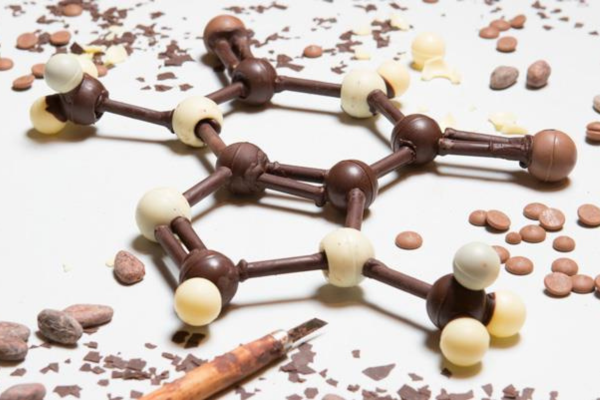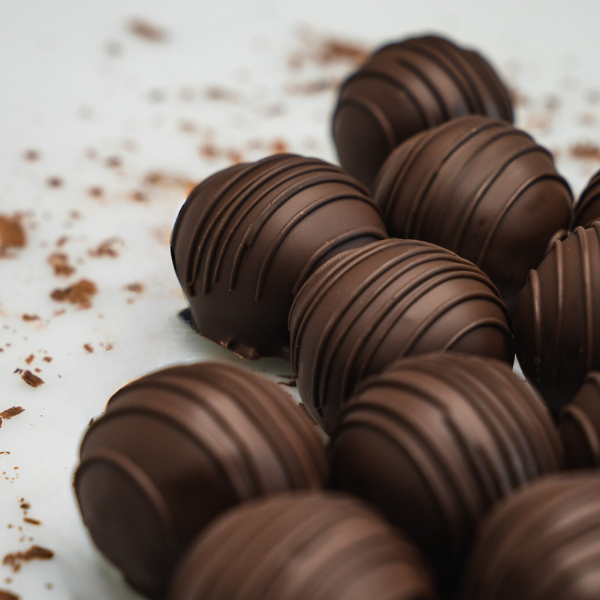How to Temper Chocolate: The Science, History, and Process Behind Perfectly Snappy Chocolate
Posted by Makana Confections on 13th May 2025
Tempering chocolate is a critical technique that transforms melted chocolate into glossy, crisp, and professionally finished confections. At Makana Confections, we use traditional tempering methods to ensure our hand-dipped chocolates—like the Chocolate Dipped Macadamia Shortbread and Dark Chocolate Mint Snaps—look beautiful, taste divine, and maintain a satisfying snap.
Whether you're a home baker or simply curious about what makes artisan chocolate stand out, here’s everything you need to know about the art of tempering chocolate, from the science and history to how it’s done by hand in our kitchens.
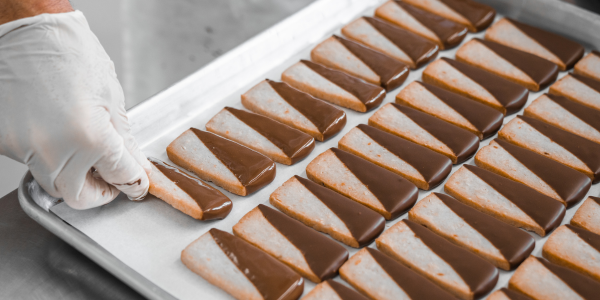
What Is Chocolate Tempering?
Tempering chocolate is the process of heating and cooling chocolate in a controlled way to stabilise the cocoa butter crystals. When done correctly, tempering creates chocolate that is:
- Smooth and glossy in appearance
- Crisp and snappy when broken
- Resistant to blooming (the whitish streaks or spots caused by fat or sugar separating)
- More stable at room temperature
If chocolate isn’t tempered, it can look dull, feel soft, and melt too easily—something we go to great lengths to avoid at Makana.
The History of Chocolate Tempering
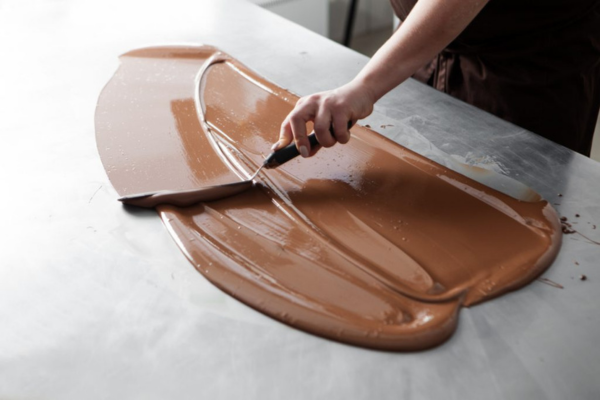
Tempering is believed to have emerged in the 19th century, as chocolate transitioned from a drinking delicacy to solid confectionery. With the rise of European chocolate houses—particularly in Switzerland and Belgium—chocolatiers began to explore how heat and cooling impacted cocoa butter's crystal structure.
Before machines were invented to automate the process, chocolatiers would manually temper chocolate on marble slabs using a palette knife and scraper. This process allowed precise control of temperature and texture.
At Makana Confections, we temper our chocolate using precision tempering machines to ensure consistent quality, shine, and texture in every batch. These machines allow us to control the exact temperatures needed for different types of chocolate, guaranteeing that every Orange Macadamia Biscotti or Truffle Medley meets our high standards.
Why Tempering Temperatures Vary
Tempering chocolate is all about forming the right cocoa butter crystals—specifically Type V crystals, which are the most stable. Each type of chocolate (dark, milk, and white) contains different amounts of cocoa solids, milk fats, and sugars. These ingredients affect how cocoa butter crystallises and therefore require different temperature ranges for optimal tempering:
|
Chocolate Type |
Melt To (°C) |
Cool To (°C) |
Reheat To (°C) |
|
Dark Chocolate |
45–50°C |
27–28°C |
31–32°C |
|
Milk Chocolate |
40–45°C |
26–27°C |
29–30°C |
|
White Chocolate |
40–43°C |
25–26°C |
28–29°C |
Why the Difference?
- Dark chocolate has the highest cocoa solids and no milk fats, so it needs higher temperatures to fully melt and re-form the right crystals.
- Milk and white chocolate both contain dairy fats, which melt at lower temperatures and interfere with the crystallisation process. Lower temperature thresholds help preserve their structure and prevent scorching.
Brand-to-Brand Variations
The exact tempering point can vary depending on the brand and recipe of the chocolate. Higher-end couverture chocolates contain more cocoa butter and fewer stabilisers, which makes them more sensitive but ideal for precision tempering. Some brands add additional fats, emulsifiers, or flavourings, which alter melting points.
At Makana, we use our own custom couverture blend, and we adjust our tempering process based on the specific characteristics of each batch—an essential step in ensuring the high quality of products like in our Dark Decadence Hamper, which features perfectly tempered, hand-dipped dark chocolate pieces.
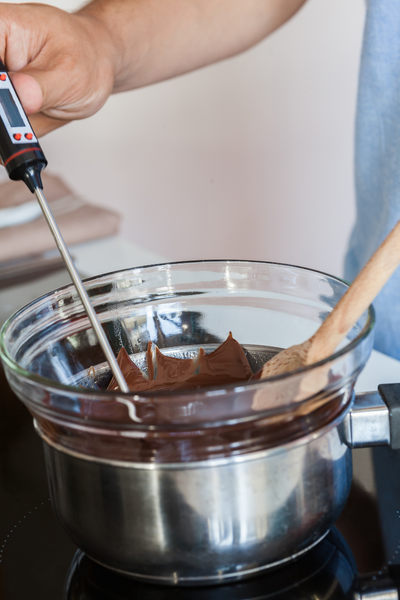 How to Temper Chocolate at Home (Without Special Equipment)
How to Temper Chocolate at Home (Without Special Equipment)
If you're curious to try the process at home, you don’t need a tempering machine. The “seeding method” is a reliable technique using a double boiler and a thermometer.
Note: We don’t recommend melting Makana products, as they’re handcrafted with added ingredients and fillings that make them unsuitable for tempering. Use pure couverture chocolate intended for melting.
You’ll Need:
- Couverture chocolate (dark, milk, or white—check packaging for tempering suitability)
- Double boiler or microwave-safe bowl
- Food thermometer
- Heat-proof spatula
Step-by-Step Tempering:
- Chop and Melt Two-Thirds
Gently melt two-thirds of your chocolate over a double boiler, stirring frequently, until it reaches the melt temperature for your chocolate type. - Cool and Seed
Remove from heat and stir in the remaining third of unmelted chocolate (“seeds”). This cools the mixture and encourages the formation of Type V crystals. - Reheat Slightly
Gently rewarm the chocolate to its final working temperature. Be careful not to overheat, or you'll need to start over. - Test the Temper
Dip a spoon or knife into the chocolate and let it sit at room temperature for 5 minutes. If it sets with a shiny surface and firm snap, it’s ready to use!
Why Consistent Tempering Matters in Every Makana Batch
At Makana, every hand-dipped product—like the Chocolate Dipped Ginger or Marlborough Pinot Noir Truffles—relies on precise machine tempering to deliver the consistently glossy finish and satisfying snap our customers expect. We never use compound chocolate, and our team carefully monitors the tempering process to match the unique needs of each batch.
Taste the Results of Properly Tempered Chocolate
Understanding tempering gives you a new appreciation for the craftsmanship behind your favourite treats. From the crisp snap of our Classic Macadamia Bark to the silky finish on our Creamy Caramels, the results of well-tempered chocolate speak for themselves.
Want to experience artisan chocolate at its best? Browse our handcrafted range here and taste the difference that expert tempering makes.

